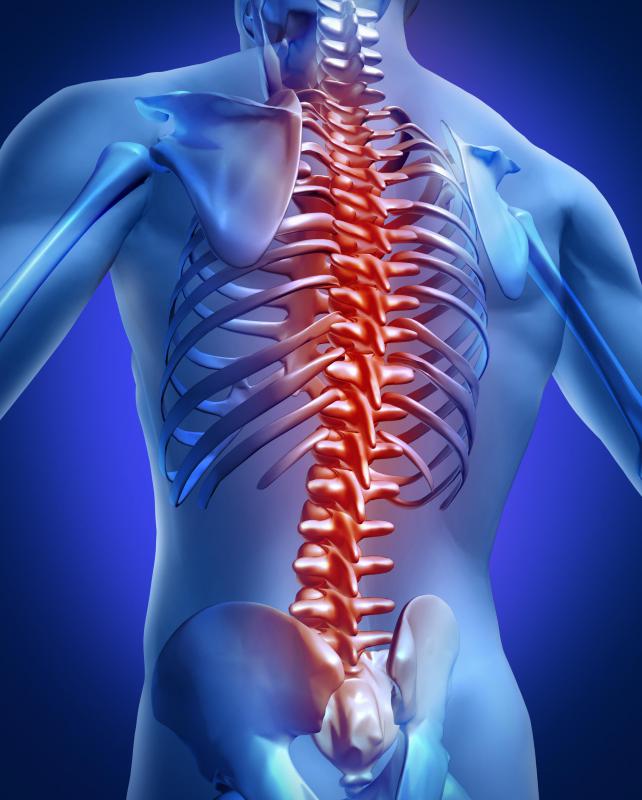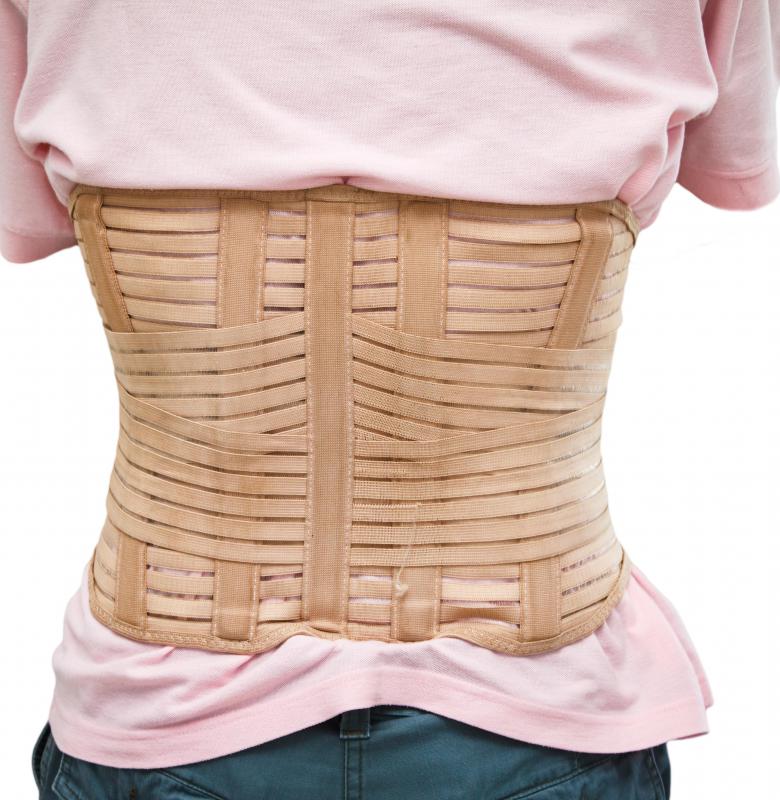At WiseGEEK, we're committed to delivering accurate, trustworthy information. Our expert-authored content is rigorously fact-checked and sourced from credible authorities. Discover how we uphold the highest standards in providing you with reliable knowledge.
What are Spinal Fractures?
Spinal fractures are breaks in the vertebrae, or the bones of the spine. These fractures may result from a trauma or an act as mild as coughing and are often made possible by a previous bone-weakening condition, such as osteoporosis. Stable fractures, or fractures that will likely hold form and position after recovery, can usually heal on their own if the patient is braced and able to rest. More severe spinal fractures, however, can pinch and sometimes tear the spinal cord, or the bundle of nerves that runs along the spine. These unstable fractures can lead to serious problems like bowel and bladder complications or paralysis and must be operated on to realign the bones and prevent any damage to the spinal cord.
The spine is made of 33 bones called vertebrae that provide support for the entire body. The different sections in the spinal column play different roles in the body's mobility and support. These sections, from top to bottom, are called the cervical spine, thoracic spine, lumbar spine, the sacrum, and the coccyx.

The cervical spine, or the neck region of the spine, begins at the base of the skull and continues down to what is called the thoracic spine. The cervical spine is made of seven vertebrae labeled C1-C7, with C1 being closest to the skull and C7 being closest to the thoracic spine. Cervical spine fractures, more commonly known as a broken neck, are usually caused by a violent trauma and may cause the patient pain, loss of sensation, paralysis, or death. Symptoms often include pain at the site of injury, pain in the arms or neck, numbness, and paralysis. The doctor will immobilize the patient to prevent further damage, examine the neck with an X-ray or an MRI, and then decide whether or not the patient needs surgery.

The twelve vertebrae of the mid-back are collectively called the thoracic spine and are labeled T1-T12. These vertebrae attach to the ribs, making them fairly stable and not as susceptible to spinal fractures as those in the cervical spine. The most common place for a break in the thoracic spine is the thoracolumbar region, where the thoracic and the lumbar spine meet. The thoracic spine is, however, the most common place for spinal compression fractures, which are caused by osteoporosis and metastatic tumors. The high level of blood flow through the thoracic spine makes encourage the metastasis, or aggressive spreading, of cancer cells.

The lumbar spine is in the lower back and consists of five vertebrae, labeled L1-L5. Some people have six lumbar vertebrae. These are the largest vertebrae and carry most of the body's weight. Because these bones are so strong and have so much muscular support, a severe trauma or advanced weakening of bones is usually associated with lumbar spinal fractures. Damage to the lumbar spine may impair a patient's ability to walk of stand upright.

The biggest fear with spinal fractures is damage to the spinal cord. Spinal fractures below L1-L2, in the sacrum or coccyx, will not result in spinal cord injury. There are nerves traveling down to the legs after L1-L2 that may be damaged by such an injury, but the spinal cord tapers off around L1-L2.
Treatment for spinal fractures depends on the location and severity of the break. Minor fractures may only require that the patient rest or wear a brace to immobilize the spine and, in some cases, take medication to manage pain. When surgery is needed, it is usually performed immediately and the damaged vertebrae are often fused together using rods, screws, or cages. Sometimes steroids are also administered to limit the chance of paralysis.
AS FEATURED ON:
AS FEATURED ON:
















Discuss this Article
Post your comments